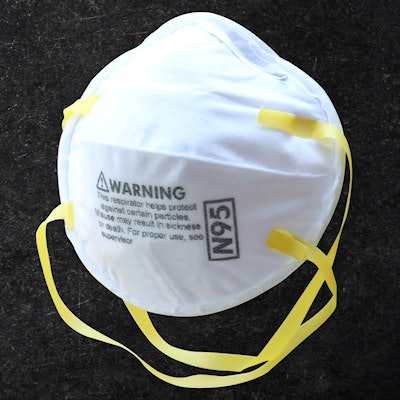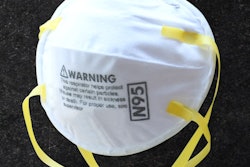
Dry heat generated by electric rice cookers, pressure multicookers, and ovens may decontaminate N95 respirators, making them safe for reuse, according to an article published on July 15 in Environmental Science & Technology Letters.
Heating an N95 respirator in an electric cooker at a temperature of 100° C (212° F) for 50 minutes effectively inactivated infections, including the transmissible gastroenteritis coronavirus. The findings suggest that an inexpensive appliance that people often have at home could provide dentists and their teams with a way to stretch their personal protective equipment (PPE) as they face dwindling supplies during the pandemic.
"Dry heat (100 °C, 5% relative humidity, 50 min) is an appropriate decontamination technology for N95 respirator reuse," wrote the authors, led by Chamteut Oh, PhD, of the civil and environmental engineering department at the University of Illinois at Urbana-Champaign.
Limited supplies
Gowns and N95 and KN95 masks are the most difficult PPE for dentists to obtain, according to about 4,000 dentists who responded to a poll from the ADA's Health Policy Institute (HPI).
Of those dentists who reported having difficulties obtaining N95 masks, 38% said they couldn't get them due to inadequate supply and 56% reported both inadequate supply and cost as factors. About 7% of practices had no supply or were unsure of their supplies of KN95 or N95 masks, as of June 15. By July 27, about 6% reported being unsure or had a zero-day supply of KN95 or N95 masks, according to the data.
Not knowing whether supplies will remain available has forced healthcare workers to get creative.
Using an everyday item
To see if dry heating was effective, a respirator was placed in an electric cooker measuring 22 cm in diameter, 15 cm in height, and 5.7 L in volume. No water was added to the pot, and a small towel was used to cover the bottom of the cooker to prevent the respirator from coming into direct contact with the heat source, as direct contact with heat can cause the mask to melt. Every five to 13 minutes, the surface temperature of the pot and the respirator was taken using an infrared thermometer, according to the authors.
Oh and colleagues used the U.S. Food and Drug Administration's requirements for viral inactivation for four viruses with different genomes. After the heating treatment, they determined the integrity of the respirators based on particle filtration efficiency and quantitative fit testing.
They found that dry heating inactivated Tulane virus, rotavirus, adenovirus, and transmissible gastroenteritis coronavirus. The respirators were decontaminated inside and out, and they maintained a filtration capacity of about 95% and kept their fit after 20 cycles of 50-minute dry heat treatments, according to the authors.
Also, stacking several masks inside the appliance did not appear to compromise decontamination, they wrote.
No guarantee
Though the masks didn't degrade after 20 cycles, filtration performance and quantitative fit testing does not guarantee that a respirator can be reused for that many cycles. Donning and doffing the mask can affect the integrity, they noted.
Because different materials may require different temperatures and treatment times to produce the same results, further studies are needed.
"The heating appliances would work for respirator reuse only if they provide the proper dry heat and enough space so that 100 °C can be maintained for 50 minutes across the respirator," they wrote.



















